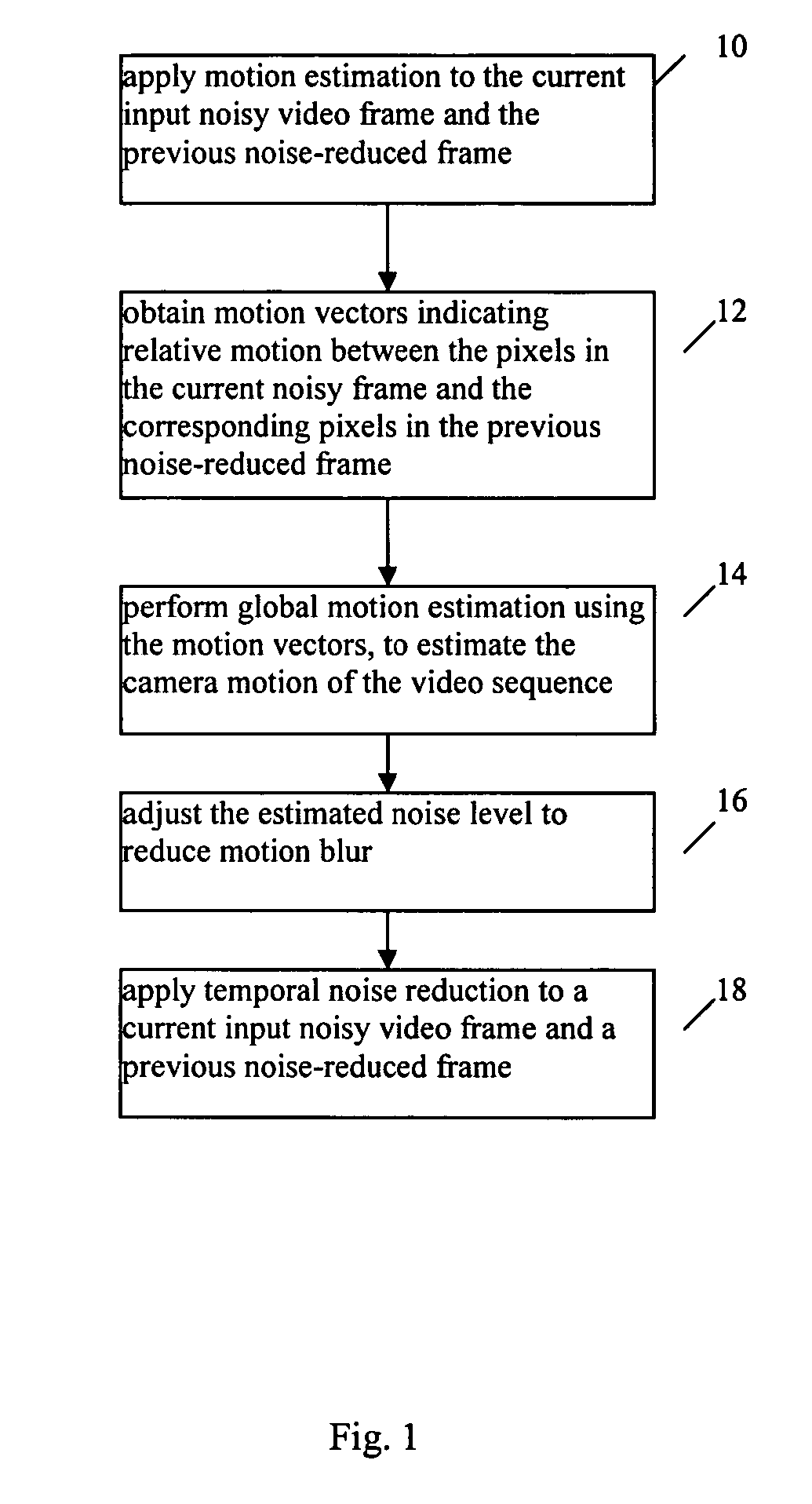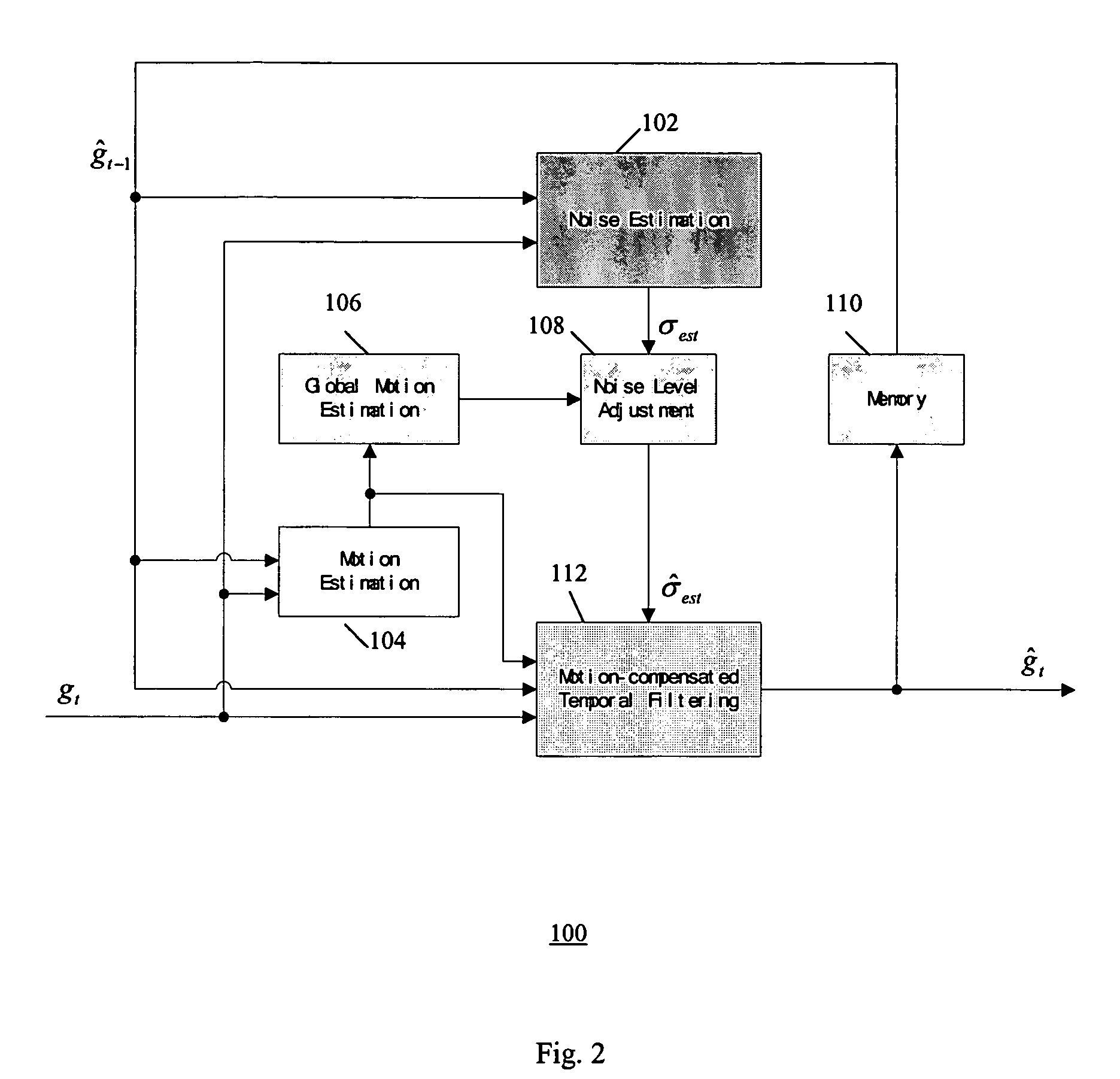Methods for adaptive noise reduction based on global motion estimation
a global motion estimation and noise reduction technology, applied in the field of video processing, can solve the problems of severe blurring of images, few real products used, and the computational cost of sorting becomes too expensive for practical implementation
- Summary
- Abstract
- Description
- Claims
- Application Information
AI Technical Summary
Benefits of technology
Problems solved by technology
Method used
Image
Examples
Embodiment Construction
[0015]In one embodiment, the present invention provides an improved temporal noise reduction method and system that detects the global motion and adjusts the overall gain of the temporal filtering. In one implementation, temporal noise reduction is applied to two video frames, wherein one video frame is the current input noisy frame, and the other video frame is a previous filtered frame stored in memory. In this method, noise estimation is first performed to estimate the noise variance / standard deviation in the input video sequence. Then, motion estimation is applied to obtain the motion vectors indicating relative motion between the pixels in the current noisy frame and the corresponding pixels in the previous noise-reduced frame. From such motion vectors, global motion estimation is applied to estimate the camera motion of the video sequence. If reliable global motion is obtained, the overall gain of the temporal filtering is reduced by adjusting the estimated noise level. Motion...
PUM
 Login to View More
Login to View More Abstract
Description
Claims
Application Information
 Login to View More
Login to View More - R&D
- Intellectual Property
- Life Sciences
- Materials
- Tech Scout
- Unparalleled Data Quality
- Higher Quality Content
- 60% Fewer Hallucinations
Browse by: Latest US Patents, China's latest patents, Technical Efficacy Thesaurus, Application Domain, Technology Topic, Popular Technical Reports.
© 2025 PatSnap. All rights reserved.Legal|Privacy policy|Modern Slavery Act Transparency Statement|Sitemap|About US| Contact US: help@patsnap.com



